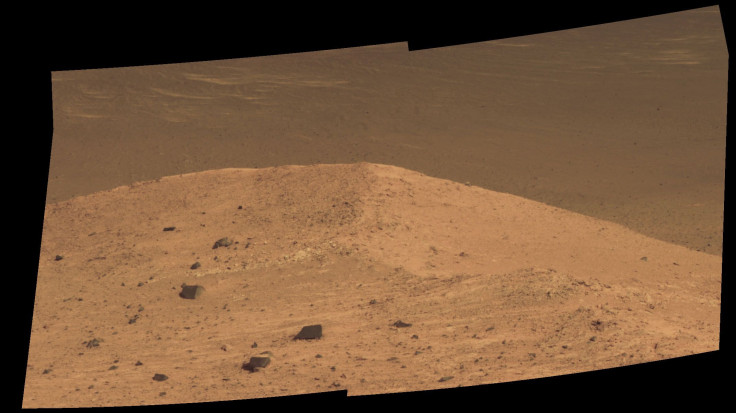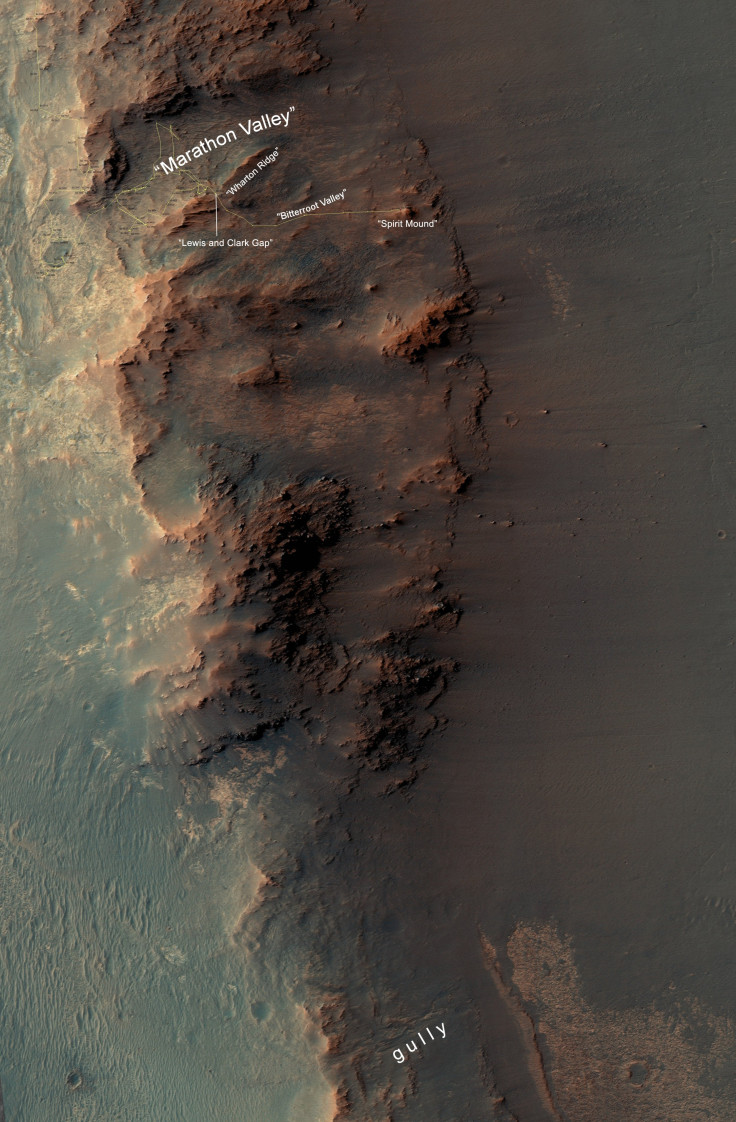NASA’s Opportunity Mars Rover To Explore Water-Carved Gully

Opportunity, NASA’s hardy Mars rover exploring the red planet since 2004, is attempting to do what no other rover has done before — drive down the full length of a long fluid-carved gully to study how it was created. In addition, the rover, which has already far exceeded its prime mission duration of 90 Martian days (92.4 Earth days), will also visit the interior of the crater it has worked beside for the last five years.
“We are confident this is a fluid-carved gully, and that water was involved,” said Opportunity Principal Investigator Steve Squyres from Cornell University, Ithaca, New York, said in a statement. “Fluid-carved gullies on Mars have been seen from orbit since the 1970s, but none had been examined up close on the surface before. One of the three main objectives of our new mission extension is to investigate this gully. We hope to learn whether the fluid was a debris flow, with lots of rubble lubricated by water, or a flow with mostly water and less other material”

The activities are part of two-year extended mission that began on Oct. 1. In its previous extended mission that ended last month, Opportunity explored the “Marathon Valley” — located on the western rim of the 14-mile-wide Endeavour Crater, near whose edge the rover has been perched since 2011 — and studied minerals that may have been created by flowing water.
“We may find that the sulfate-rich rocks we’ve seen outside the crater are not the same inside," Squyres said. “We believe these sulfate-rich rocks formed from a water-related process, and water flows downhill. The watery environment deep inside the crater may have been different from outside on the plain — maybe different timing, maybe different chemistry.”

Investigations carried out by Opportunity over the past five years in a series of small craters near Endeavour have revealed evidence of acidic ancient water that soaked underground layers and sometimes covered the surface.
We already know that Mars, currently a dusty and barren wasteland, was not always so. Data collected by the Mars Reconnaissance Orbiter and the Curiosity rover have bolstered the theory that roughly 4.3 billion years ago, Mars had enough water to cover its entire surface in a liquid layer about 450 feet deep.
Evidence also suggests that long after solar winds stripped the red planet of its atmosphere, turning it into the cold, arid world it is today, lakes of water and snowmelt-fed streams still existed on its surface.
© Copyright IBTimes 2024. All rights reserved.






















